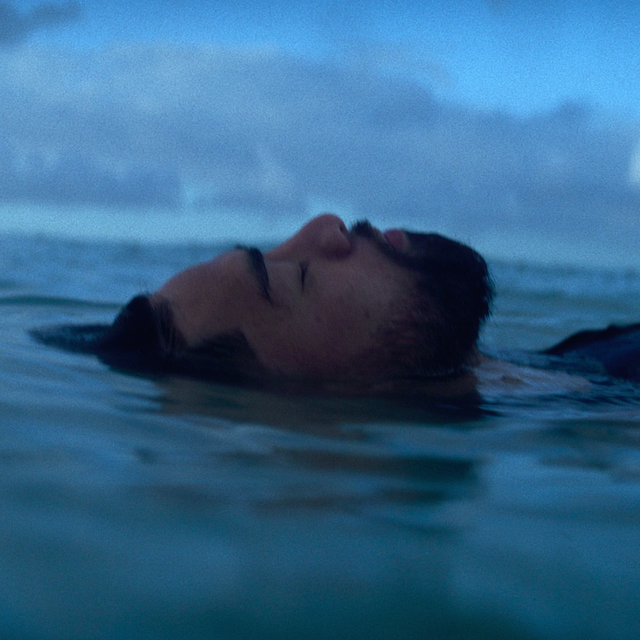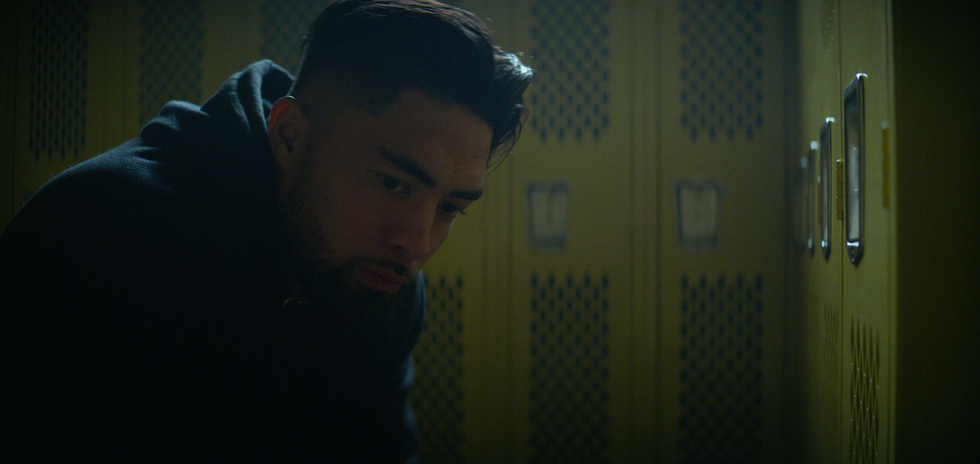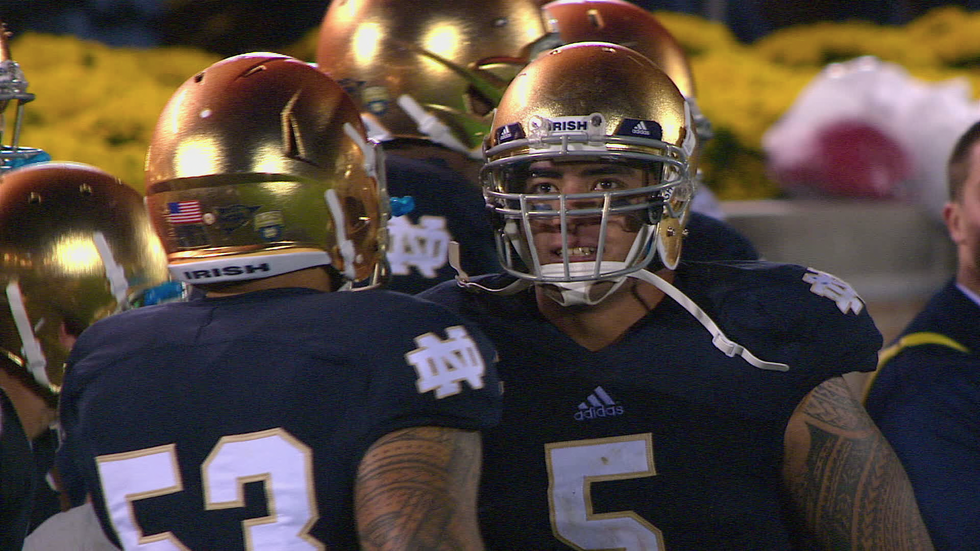Back in 2009, no common term existed for people pretending to be somebody they weren’t online. But all that changed a year later when Nev Shulman’s documentary Catfish arrived, introducing us all to a phenomenon that seemed to be growing more prevalent by the day.
The film became a long-running MTV reality series, in which victims unmasked their online lovers for who they really were. And while there were many incredibly shocking stories about identity fraud and abuse of trust, one relationship it missed out on was that of American footballer Manti Te’o and his “girlfriend” Lennay Kekua.
It was big news at the time, and Te'o became the target of ridicule in the press and on TV when the truth emerged. Now, The Girlfriend Who Didn’t Exist, a two-part documentary that arrives as part of Netflix’s Untold series, revisits the strange story – and reveals who he was really talking to.
What happened in the Manti Te’o catfishing story?
Back in 2012, Te’o was a rising college sports star and a formidable talent in the world of the NFL. He was a linebacker for Notre Dame, and it seemed that a stellar sports career was a certainty. But then on 11 September he was hit by a double tragedy: both his grandmother, Annette Santiago, and girlfriend, Lennay Kekua, died on the same day.
His girlfriend was a 22-year-old Stanford university student who had not only survived a car crash, but then died of leukaemia. When Te’o took to the football pitch, it was by all accounts an incredible performance – he took 12 tackles and his team went on to beat Michigan State 20-3. Afterwards, he said it was because Kekua had told him that if anything ever happened to her, that he must “promise that you'll stay there and you'll play and you'll honour me through the way you play.”
Naturally, the media picked up on this highly-emotional story of a footballer driven by the loss of a loved one. But then the sports news outlet Deadspin did some digging.
In an expose article, following an anonymous email tip off, the publication investigated the late Kekua. Specifically, four months after her supposed death, reporters Timothy Burke and Jack Dickey revealed that she did not exist, that her profile pictures were actually of a woman called Diane O’Meara (who had no idea she was being used for a catfish) and that it was most likely that a person named Naya Tuiasosopo (as she goes by now) had orchestrated the whole thing. Weirder still, the person was known to Te’o, according to Deadspin.
What had happened?
Te’o and the person purporting to be Kekua had first met on (*red flag*) Twitter in 2011, and struck up a friendship online. Things were muddied by the fact that Te’o had stretched the truth somewhat, and perhaps embarrassed by the fact he had never met his girlfriend in person, told family members that they had met.
In a 2012 interview with Sports Illustrated, the journalist wrote about how intense their relationship had become after dating online for a year, when the “tragedy” struck: “Te'o developed a nightly ritual in which he would go to sleep while on the phone with her. When he woke up in the morning his phone would show an eight-hour call, and he would hear Lennay breathing on the other end of the line. Her relatives told him that at her lowest points, as she fought to emerge from a coma, her breathing rate would increase at the sound of his voice.”
The Deadspin expose was almost accusatory and suggested that Te’o had been in on it the whole time, as a way of garnering positive publicity for himself. But, as other people pointed out, he was surely just trying to cover up his shame over being duped into a relationship with a fraud. Whatever the truth, Te’o sadly became a person of ridicule both online and off (Saturday Night Live even parodied the story on the show).
At the time of the revelation, Te’o released a statement: “This is incredibly embarrassing to talk about, but over an extended period of time, I developed an emotional relationship with a woman I met online. We maintained what I thought to be an authentic relationship by communicating frequently online and on the phone, and I grew to care deeply about her. To realise that I was the victim of what was apparently someone's sick joke and constant lies was, and is, painful and humiliating.”
In the Untold documentary, there are interviews with both Te’o and the culprit, Tuiasosopo, who is now a trans woman. “I just had to start living my life,” she says. “And I wanted to be able to live my life as trans. I still feel horrible [about the hoax], and sometimes I wish that everything had been undone. But then another part of me was like, I learned so much about who I am today and who I want to become because of the lessons I learned through the life of Lennay.”
Although some say his sports career has been negatively impacted by the whole ordeal, Te’o is focused on learning to process it all. As he says in the series: “I’ll take all this crap. I’ll take all the jokes, I’ll take all the memes, so I can be an inspiration to the one who needs me to be.”
Untold: The Girlfriend Who Didn’t Exist is streaming on Netflix now















